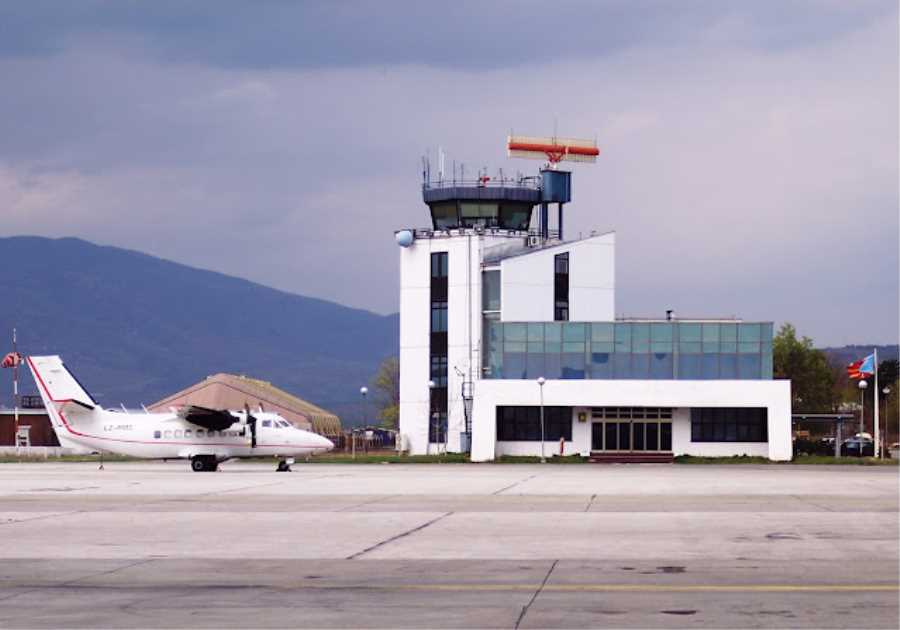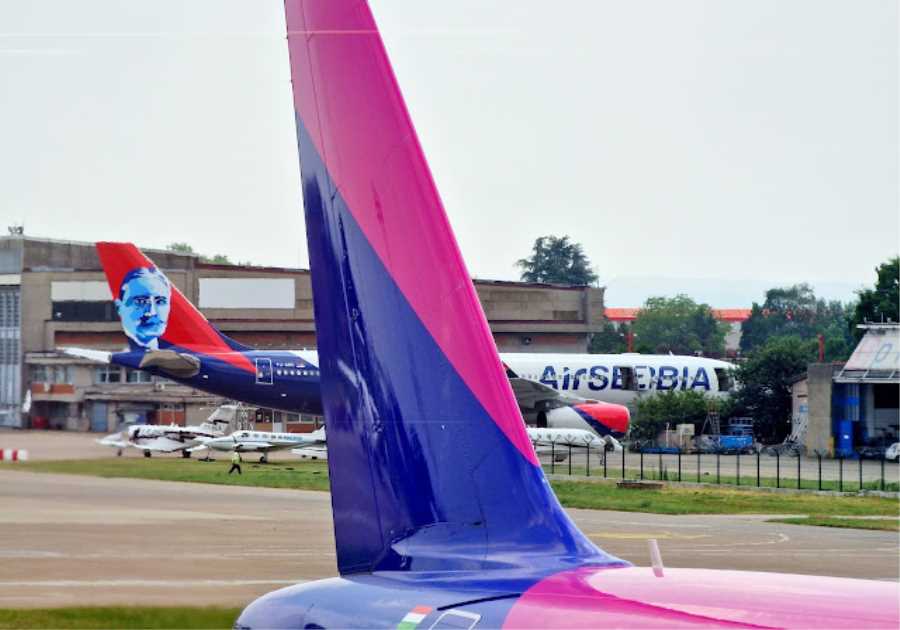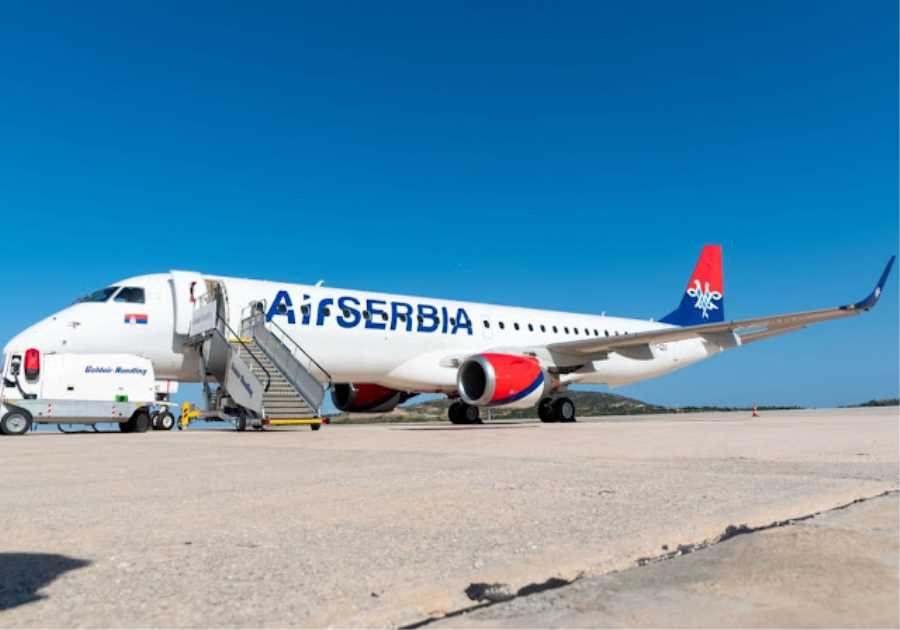HOSTED BY: https://1airtravel.com
TODAY'S READ
Air India Express flight AXB1344 from Dubai to Kozhikode (a.k.a. Calicut) crashed while landing at Kozhikode airport on August 07, 2020, at 14:11 UTC (19:41 IST). The aircraft involved in the accident was a Boeing 737-800 aircraft, registration VT-AXH.
Air India Express was operating a quick return flight on sector Kozhikode-Dubai-Kozhikode under ‘Vande Bharat Mission’ to repatriate stranded Indian nationals. The aircraft departed from Kozhikode for Dubai at 10:19 IST (04:49 UTC) on August 07, 2020, and landed in Dubai at 08:11 UTC. On its return from Dubai for Kozhikode, the aircraft departed at 10:00 UTC as flight AXB 1344 carrying 184 passengers and six crew members.
The weather in Kozhikode was bad. It had been raining the whole day with winds from the west in the range of 5 to 17 knots. Runway visibility was less than 2 km, and scattered cloud ceiling was as low as 300 feet.
Air India Express AXB1344 Pilot in Command (PIC) that day was 59-year-old Capt. Deepak Sathe, an air force veteran with over 10,000 flying hours experience, out of which 4600 hours were on B737 type of aircraft. The first officer was 32-year-old Capt. Akhilesh Kumar, with 1989 flying hours experience, 1723 hours were on B737.
The report has established ‘Pilot Error’ as the leading cause of the accident. Here are some of the points listed in the report.
Kozhikode Airport Warnings
Kozhikode airfield was under two concurrent ‘Aerodrome Warnings’ when the aircraft came in for a landing. The first warning was for thunderstorms associated with rain and the second warning was for wind speed exceeding 17kt. Due to these two warnings, a ‘Weather Standby’ was declared by ATC, and the Crash Fire Tenders (CFTs) were specially positioned at ‘Pre-Determined Points’ (PDPs) along the runway.
In addition, the Director-General of Civil Aviation (DGCA) had declared Kozhikode airport as a ‘critical’ airport. The warning implied that only the flight Pilot-in-Command (PIC) was permitted to land or take off an aircraft and not the first officer.
Missed Approach Runway 28
The Air Traffic Control (ATC) at the airport had cleared Runway 28 for landing. The plane would have landed in feeble rain with a headwind of 12 to 13 knots. However, the Pilot was unable to land on this runway and had crossed minimums. The runway was not sighted, and the Pilot decided to go around. The reason given was to ATC was – “Due to weather and heavy rain.”
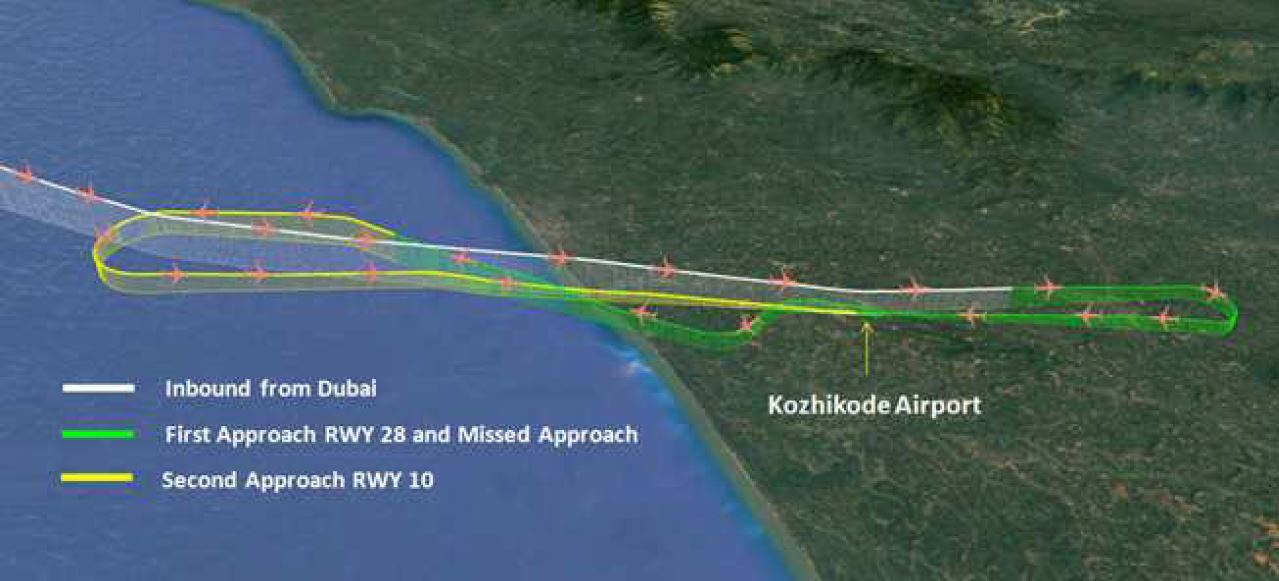
Flight trajectory during missed approach & final landing – Credit: AAIB Report
Faulty Windscreen Wiper on Pilot Side
While decoding the cockpit voice recorder, a conversation between the two pilots indicates that the Pilot-in-Command (PIC) side windscreen wiper stopped functioning while attempting to land on Runway 28. A faulty wiper could be attributed to the decision to go around. However, it has also been established that the wiper did start functioning later, though at slow speeds.
Pilot’s Decision to Land on Runway 10
Instead of taking a full 360-degree go-around, the PIC decided to land on runway 10 from the opposite directions. ATC transmitted the weather as ‘visibility 2000m, winds 260°/05kt and CBs all around the airfield at 2500ft’. After that, AXB 1344 accepted runway 10 for landing. However, the wind sensor on the runway at that point in time was non-functional. Later, it has been shown in the report that the actual tailwind was 17 knots at the time the plane landed.
Touchdown In the Middle of the Runway
The First Officer cautioned the Pilot twice for a high Rate of Descent (ROD), which the Commander acknowledged for ‘correction’. However, the approach soon became unstable. Seconds before touchdown, while the aircraft was crossing 10ft. altitude, at 4200ft. beyond the threshold, the PM gave a call of “Go around.” There was no response from the Pilot to the “Go-Around” call, and he continued with landing. The aircraft touched down at 4438ft. on the 8858ft. long runway.
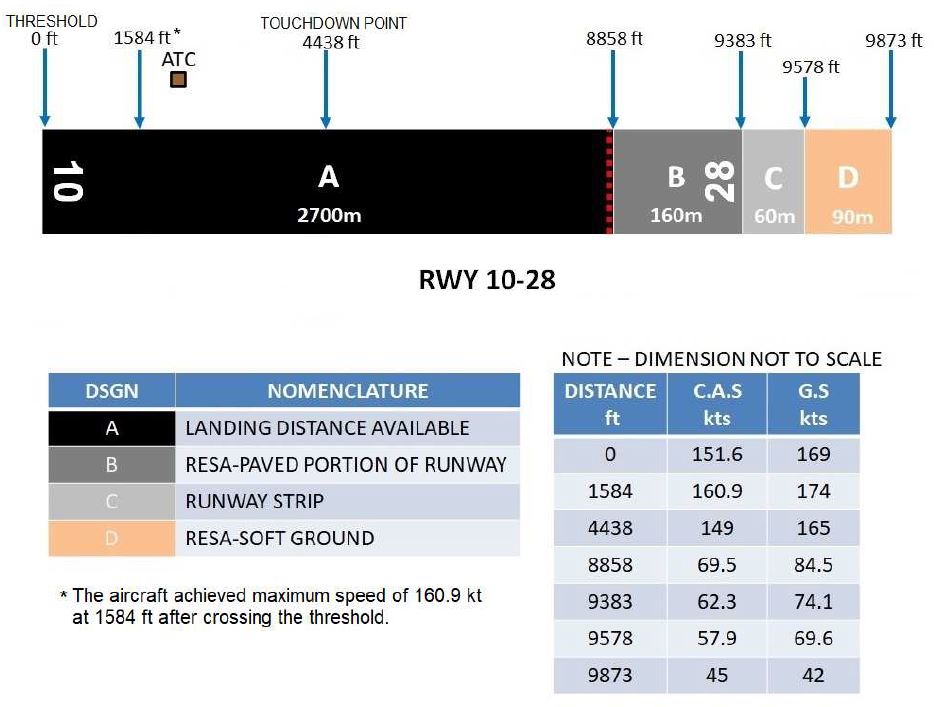
Touchdown position on Runway 10 – Credit: AAIB Report fter Touchdown, the Crash Was Inevitable
The authorities, along with Boeing, carried out mathematical modeling of all possible scenarios. The conclusion was that AXB 1344, could not have stopped on the remaining runway or carried out a safe missed approach after the touchdown. However, under identical weather, runway conditions, and same touchdown point, the aircraft would have stopped safely, on the remaining runway and even carried out a safe missed approach, if the winds were headwinds instead of tailwinds.
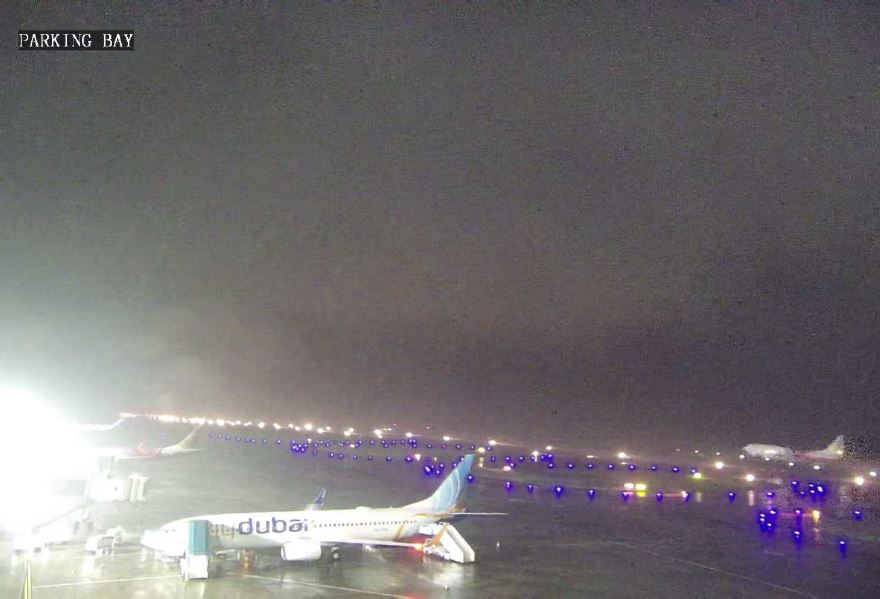
CCTV Footage – The last picture of VT-AXH landing in background – Credit: AAIB Report
Conclusion
A wet runway, a strong tailwind, ignoring all warnings of the first officer, a faulty wiper – all contributed to the unfortunate crash. In addition, personal traits such as ‘hurry-to-go-home’ and ‘tendency to float on runaway’ have also been mentioned for the Pilot in Command.
Air India Express flight AXB1344 crash left twenty-one (21) people dead, including the two pilots. Seventy-five (75) passengers and one cabin crew sustained serious injuries. Thirty-three (33) passengers and one cabin crew had minor injuries, while fifty-seven (57) passengers and two cabin crew did not sustain any injuries due to the crash.
This article and images are heavily based on the following report –
FINAL INVESTIGATION REPORT ACCIDENT INVOLVING M/S AIR INDIA EXPRESS LIMITED B737-800 AIRCRAFT VT AXH ON AUGUST 07 2020 AT KOZHIKODE, AIRCRAFT ACCIDENT INVESTIGATION BUREAU, MINISTRY OF CIVIL AVIATION, GOVERNMENT OF INDIA.
What are your views on the outcome of the AAIB investigation? Leave your comments below.
By: Ajay PrakashTitle: Air India Express AXB 1344 Crash Report Highlights
Sourced From: travelradar.aero/air-india-express-axb-1344-crash-report-highlights/
Published Date: Sun, 19 Sep 2021 22:00:39 +0000
Did you miss our previous article...
https://1airtravel.com/feature/swiss-develops-new-buyonboard-concept-against-food-waste


